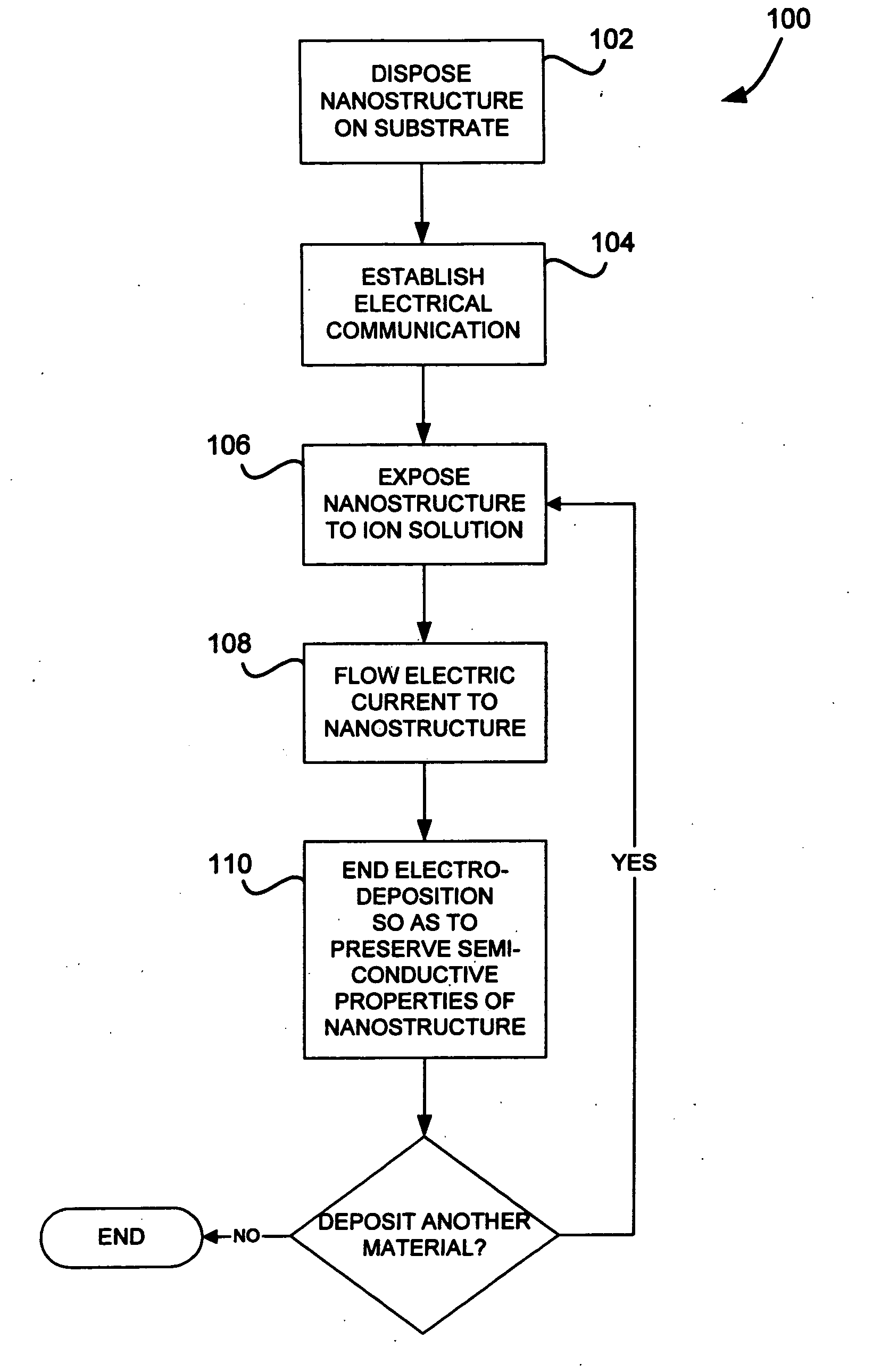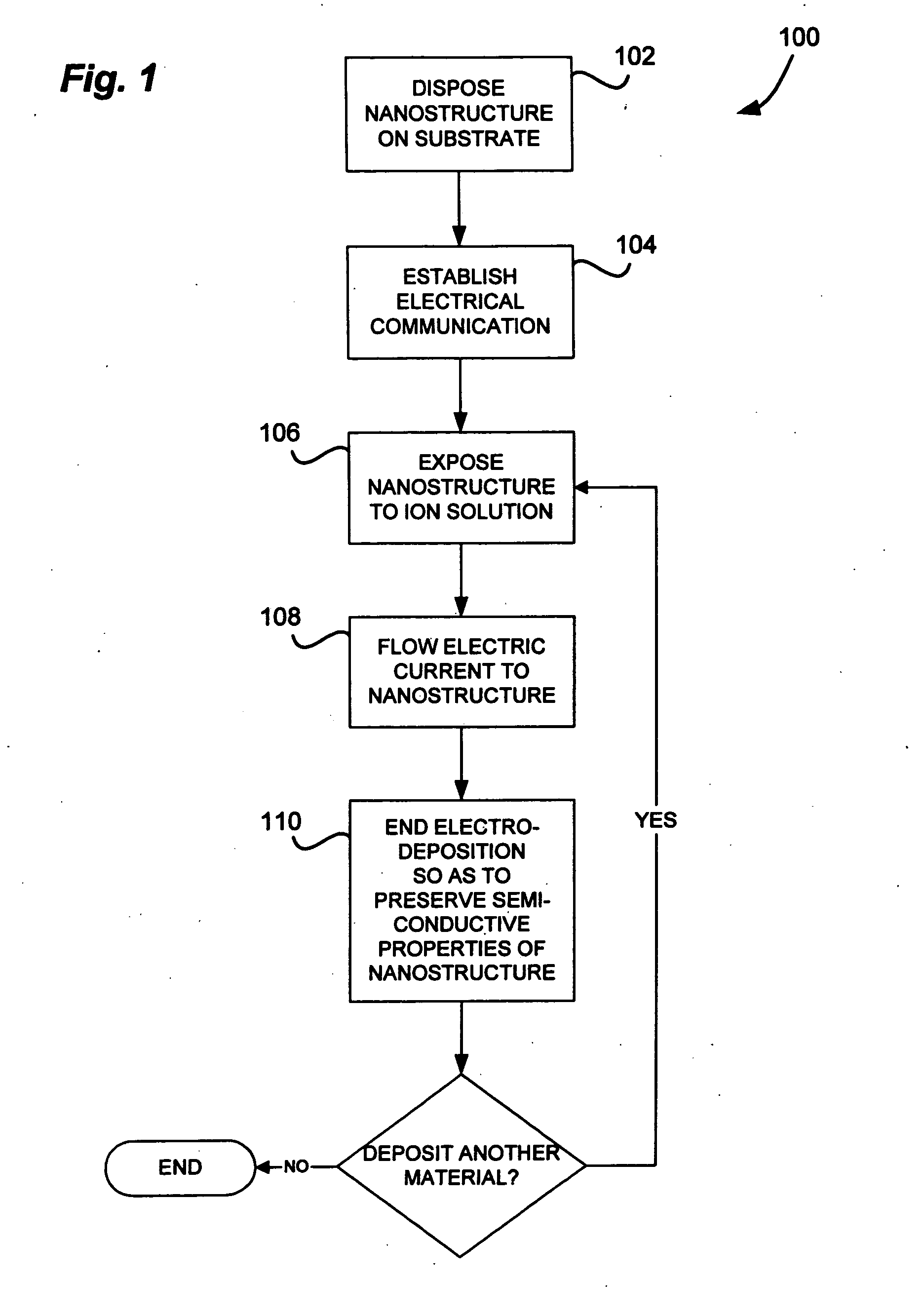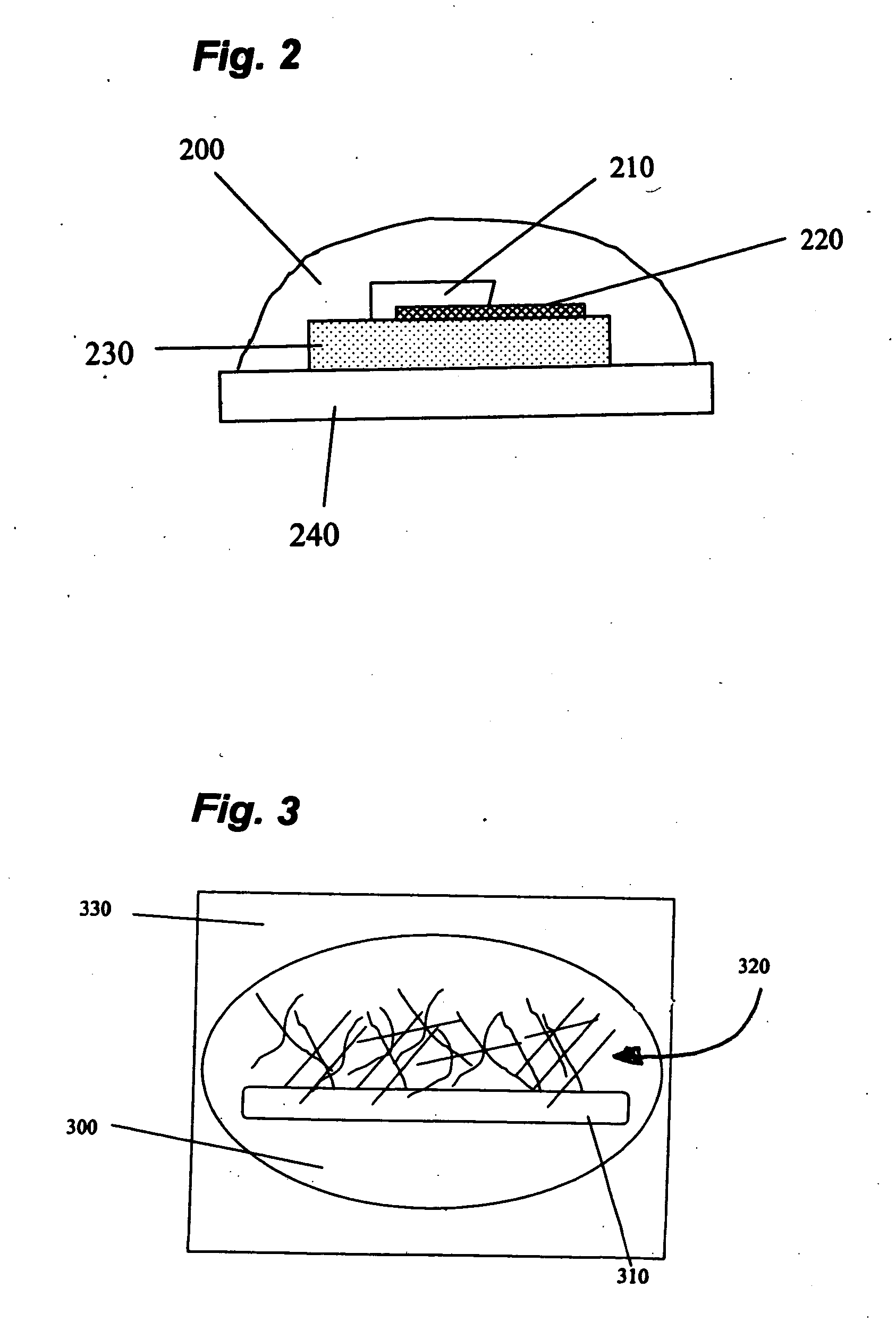Nanostructures with electrodeposited nanoparticles
a nanoparticle and nanostructure technology, applied in the field of electrodeposited nanostructures, can solve the problems of limited nanostructure approaches, difficult modification effects, and limited nanostructures, and achieve the effect of reducing the size of the minimum size of the region, and reducing the size of the nanostructur
- Summary
- Abstract
- Description
- Claims
- Application Information
AI Technical Summary
Benefits of technology
Problems solved by technology
Method used
Image
Examples
example 1
[0047] A nanotube network was prepared as described in U.S. application Ser. No. 10 / 177,929. A titanium film was deposited by evaporation and patterned lithographically into the form of electrical contacts. The substrate was placed on an aluminum block, this block being electrically grounded. Copper and iron blocks were also used for some experiments. Metal pins were pushed onto several of the titanium contacts on the substrate, thus making electrical contact. These metal pins were electrically grounded. The chip was rinsed with a 1:1 mixture of water and ethanol for cleaning. A 5 mM solution of PdCl2 in a 1:1 mixture of water and ethanol was prepared. Five drops of the solution were placed on the substrate, with the solution contacting both the substrate and the underlying aluminum block. After 30 seconds, the solution was rinsed off with a 1:1 mixture of water and ethanol, and the chip was dried with a stream of compressed air. Subsequently, a 5 mM solution of Na3RhCl6 in a 1:1 mi...
example 2
[0050] A nanotube network was prepared like that of Example 1. An aluminum (or other possible counterelectrode metal) film (50 nm) was deposited by evaporation and patterned lithographically into the form of electrical contacts. The chip was rinsed with a 1:1 mixture of water and ethanol for cleaning. The chip was then submerged in a vial of ˜1 mL 5 mM PdCl2 solution in a 1:1 mixture of water and ethanol. After 30 seconds, the chip was removed from the vial and the solution was rinsed off with a 1:1 mixture of water and ethanol. Finally, the chip was dried with a stream of compressed air. Subsequently, a 5 mM solution of Na3RhCl6 in a 1:1 mixture of water and ethanol was prepared. The chip was then submerged in ˜1 mL of the Na3RhCl6 solution. After 30 seconds, the solution was rinsed off with a 1:1 mixture of water and ethanol, and the chip was dried with a stream of compressed air.
example 3
[0051] Application of an electrodeposition process to fabrication of multi-analyte sensor arrays was demonstrated. The finished sensor arrays were tested by passing different analytes over the sensor array and resolving signatures for the given gases, thereby identifying them. In a laboratory setting, various gases were delivered to the surface of the sensor array. Response data was collected and analyzed using a technique for negate the bias associated with poisoning and nonrandom sampling. The data stream was then filtered and processed through principal component analysis (PCA) to recognize the signature associated with each gas analyte.
[0052] Site-specific metal electrodeposition was used to deposit nanoparticles of different composition on different regions of nanotube films in adjacent sensor devices on a chip. Adjacent devices were thereby functionalized to respond to different analytes. Control of the electrodeposition process was accomplished by grounding specific nanotube...
PUM
| Property | Measurement | Unit |
|---|---|---|
| current | aaaaa | aaaaa |
| current | aaaaa | aaaaa |
| time | aaaaa | aaaaa |
Abstract
Description
Claims
Application Information
 Login to View More
Login to View More - R&D
- Intellectual Property
- Life Sciences
- Materials
- Tech Scout
- Unparalleled Data Quality
- Higher Quality Content
- 60% Fewer Hallucinations
Browse by: Latest US Patents, China's latest patents, Technical Efficacy Thesaurus, Application Domain, Technology Topic, Popular Technical Reports.
© 2025 PatSnap. All rights reserved.Legal|Privacy policy|Modern Slavery Act Transparency Statement|Sitemap|About US| Contact US: help@patsnap.com



